A paludarium is a wonderful enclosure that allows for a stunning habitat where part of the structure is land and another part is the water, ideal for many interesting reptiles and amphibians. However, getting lost among all the available choices can be quite a challenge to select the right animals and prepare their habitat.
Content Table
In this article, you will find all the necessary information related to Paludarium animals and paludarium building. This will include selecting appropriate reptile species and constructing the ideal environment, including the enclosure.
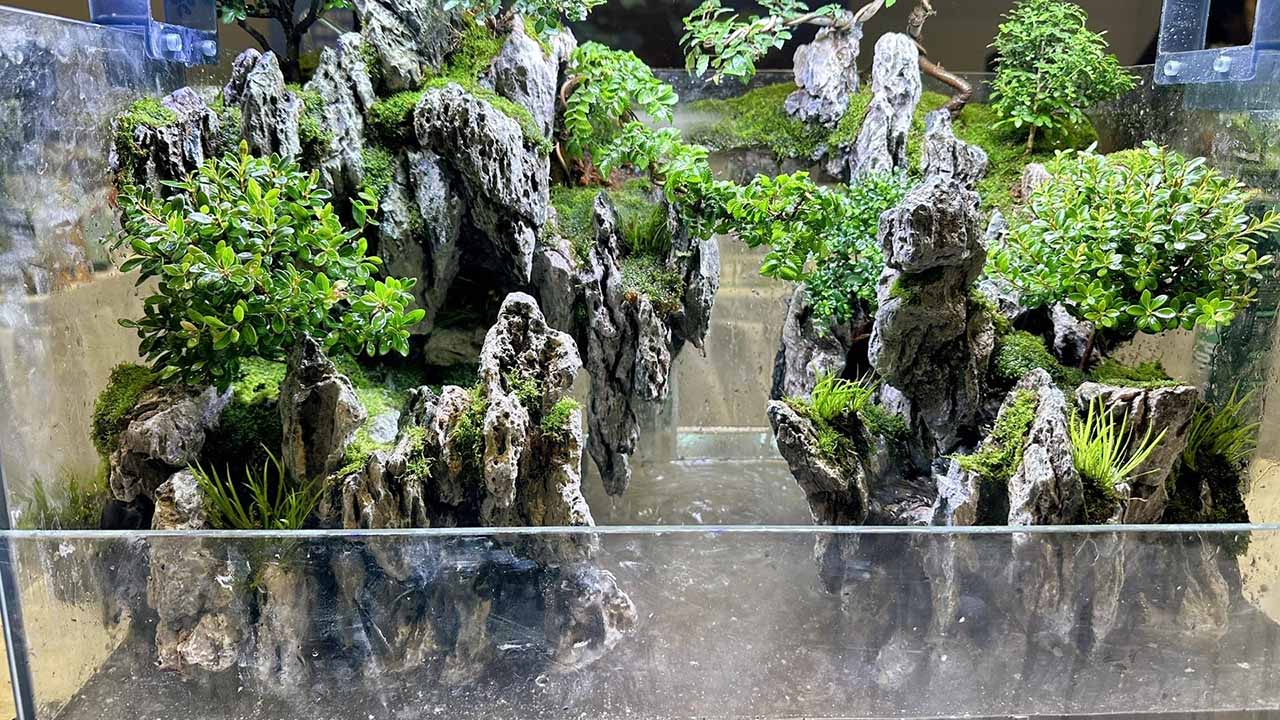
paludarium build
Paludarium Animals
Paludariums are vivariums that combine land, water, and air environments, making them suitable for a wide variety of animals that have semiaquatic lifestyles. Here are some of the popular animals you can keep in a paludarium.
- Fish: Small freshwater fish is a popular choice for paludariums. Some good options include guppies, mollies, killifish, and rasboras. Just make sure the fish you choose are compatible with the other animals in the aquarium and that it is big enough for them.
- Amphibians: Frogs and toads are well-suited to paludariums as they enjoy both water and land. Popular choices include tree frogs, dart frogs, fire-bellied toads, and newtsor Axolotl.
- Reptiles: Some semiaquatic reptiles can also be kept in paludariums, such as mudskippers, red-eyed crocodile skinks, and Chinese water dragons. However, it is important to choose a reptile that is the right size for your paludarium and that has the same environmental needs as the other animals you plan to keep.
- Invertebrates: Invertebrates such as shrimp, snails, isopods, and springtails can be a good addition to a paludarium. They help to keep the paludarium clean and can provide a food source for some of the other animals.
Reptile Paludarium
A reptile paludarium is a paludarium for reptiles that live aquatic environment most of the time, and partly on the surface of the water. It harmoniously blends the concept of a terrarium – the ground and aquarium – water to create a miniature reproduction of a swamp, a rainforest, or the ground of a river.
Here’s a breakdown of the characteristics and styles of a reptile paludarium:
Characteristics
- Land-Water Split: A reptile paludarium is going to have a terrestrial and aquatic area, producing a natural transition between the two. The size of each section depends on the specific needs of the particular reptile inhabitant(s) in question. Normally, the land area will be more extensive for those reptiles that spend most of their time in trees or tree branches.
- Humidity: Paludarium habitats are filled with water and, as such, naturally support high humidity levels, which are beneficial for most reptiles.
- Vegetation: Living plants play an important role in a reptile paludarium design. Besides being quite visually appealing, vivariums ensure the regulation of the ambient humidity, create a camouflage effect, and can act as a source of animal food for some reptilian species.
- Bioactivity: A bioactive substrate in the land section involves beneficial microorganisms, such as springtails and isopods, to aid in waste decomposition as well as create an ecosystem.
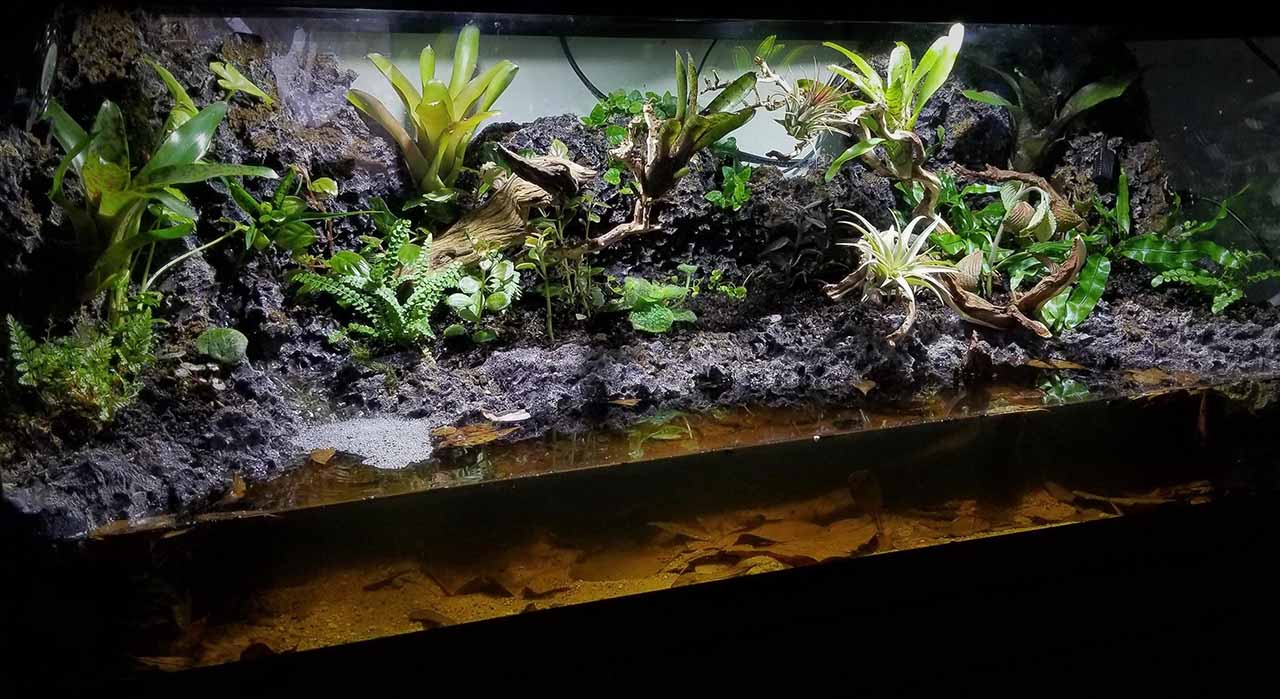
reptile paludarium
Styles
- Vertical Paludarium: This is a high structure having a water pool at the base and a vast land mass with towers and climbing ropes on the rooftop. Perfect for climbing and other pet reptiles such as crested geckos or gargoyle geckos.
- Horizontal Paludarium: This type has a relatively better division of partitioning the land area and the water area, where the water part is side by side with the land part. Ideal for semiarboreal or terrestrial reptiles who like to swim occasionally or frequently depending on the type of water, such as anoles or water skinks respectively.
- Biotope Paludarium: This type imitates a particular natural habitat, such as a mangrove forest or a rainforest stream. The plants selected, ornaments and even the fountains selected would be in harmony with the biotope selected.
How to Build Reptile Paludarium
Building a paludarium for your reptile can be a rewarding experience, allowing you to create a beautiful and functional mini-ecosystem. Here’s a breakdown of the general steps involved:
Planning and Choosing Your Reptile
- Research: Before diving in, thoroughly research the specific needs of your chosen reptile species. This includes their preferred temperature range, humidity levels, water requirements, and any specific needs for basking areas or hiding spots.
- Paludarium Type: Based on your reptile’s needs, decide on the style of paludarium (vertical, horizontal, or biotope). Consider the land-to-water ratio and potential climbing elements if your reptile is arboreal.
Materials and Tools
- Enclosure: A glass terrarium or aquarium is a popular choice. Size is crucial, so choose one that provides ample space for your reptile’s adult size.
- Land Base Materials: Water-resistant base layer (ex, styrofoam), egg crate (for drainage), mesh screen (to separate land and water), substrate (coconut fiber, reprisal, etc.).
- Water Features: Waterproofing material (silicone sealant), submersible pump and aquarium filter, decor for water area (rocks, driftwood).
- Land Decor: Cork bark, branches, live plants suitable for high humidity, and hiding spots.
- Lighting and Heating: UVB lighting for vitamin D synthesis, basking lamp (if needed), thermometer, and hydrometer to monitor conditions.
- Tools: Silicone sealant gun, cutting tools, drill (optional for water features).
Building the Paludarium
- Waterproofing: Ensure the base is watertight using silicone sealant. Follow the curing times specified for the sealant.
- Land Base Construction: Create a false bottom with styrofoam or similar material, covered with an egg crate for drainage. Separate the land area from the water with mesh and substrate.
- Water Features: Install the pump and filter following their specific instructions. Design the water area with rocks and driftwood, and ensure proper water flow.
- Land Area Design: Add the substrate, plants, cork bark, branches, and hiding spots, following a natural aesthetic and providing climbing opportunities if needed.
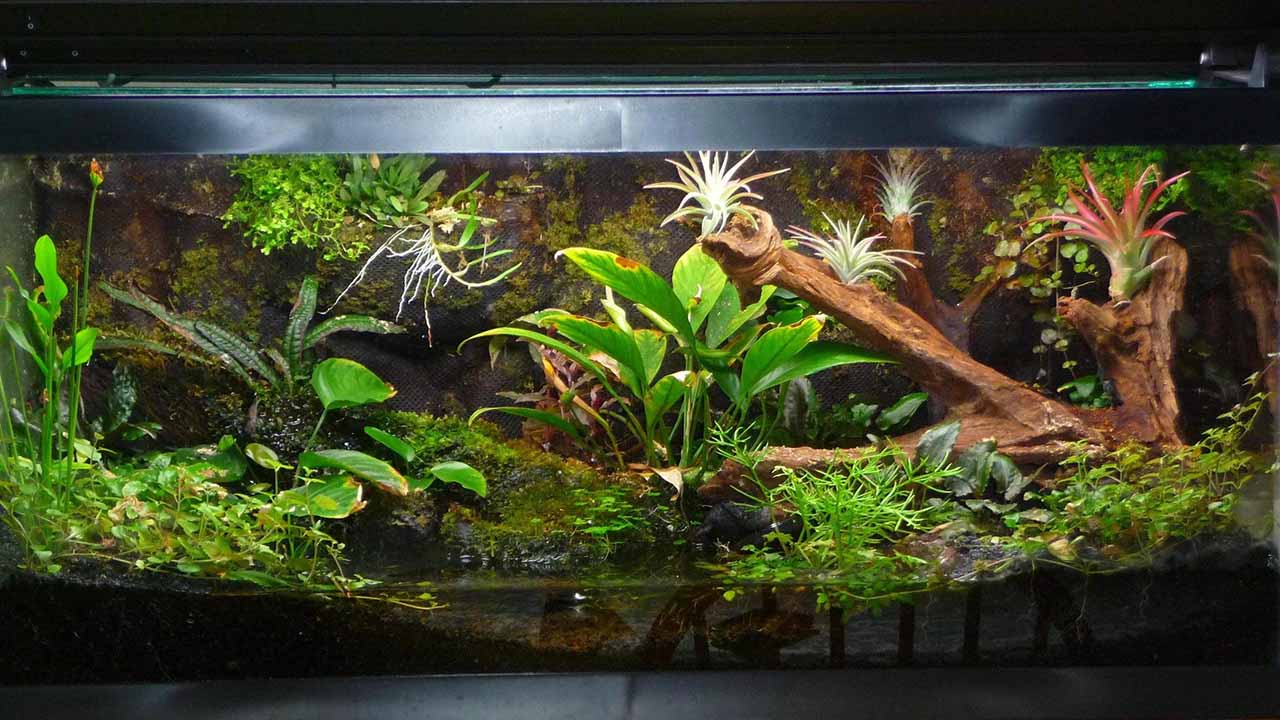
fire-bellied toad paludarium
Setting Up for Specific Reptiles
Here’s a brief overview of considerations for some popular reptile paludarium inhabitants:
- Turtle Paludarium: Focus on a larger water area with a basking platform accessible from land. Ensure the water depth is suitable for swimming and includes UVB lighting positioned over the basking area. Choose plants that can tolerate being partially submerged.
- Frog Paludarium: Prioritize a larger land area with climbing elements and ample hiding spots. Maintain high humidity levels with a waterfall feature or frequent misting. Select plants that thrive in high humidity and can tolerate climbing frogs.
- Fire-Bellied Toad Paludarium: Similar to a frog paludarium, prioritize land area with hiding spots and moisture-loving plants. The water area can be shallower, as fire-bellied toads are not strong swimmers.
Additional Tips:
- Bioactivity: Consider incorporating a bioactive substrate with isopods and springtails to help with waste decomposition and create a mini-ecosystem.
- Test Runs: Before introducing your reptile, run the paludarium for a few weeks to ensure proper water quality, temperature, and humidity levels are stable.
- Live Plants: Choose plants suitable for high humidity and terrarium environments. They add beauty and help maintain humidity levels.
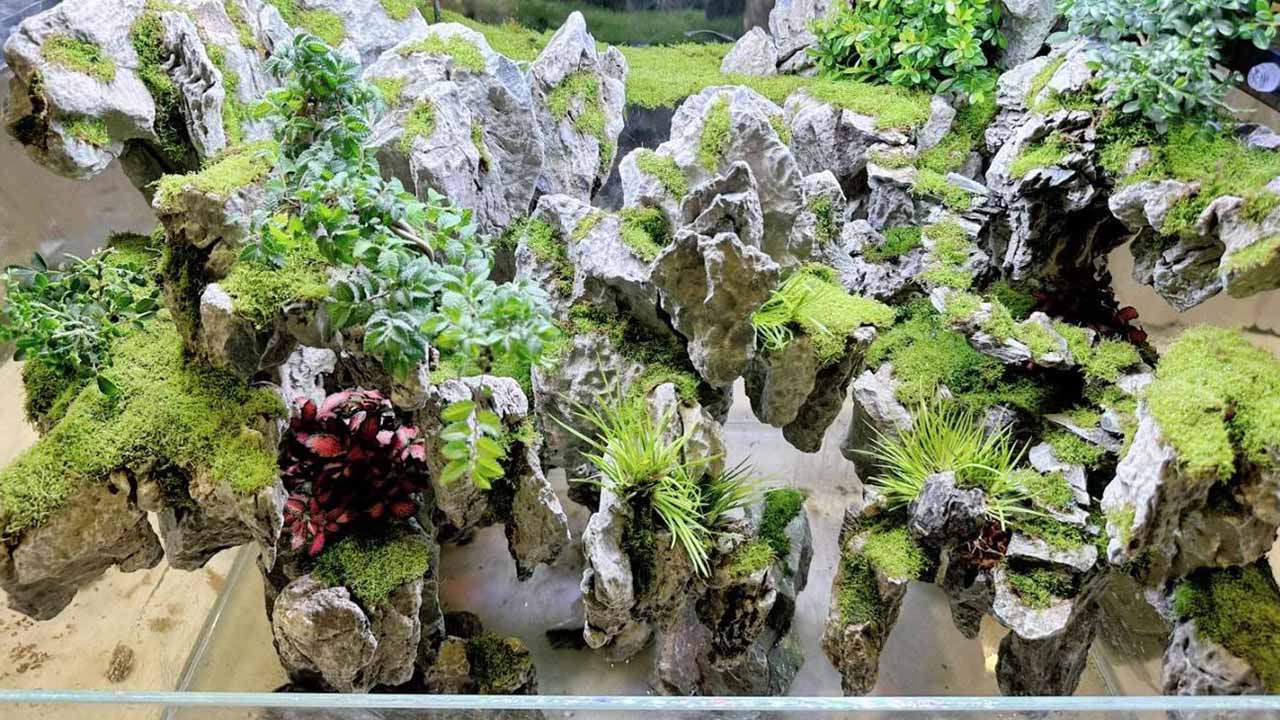
paludarium animals
Paludarium Enclosure
Here’s a breakdown of what to consider when choosing an enclosure for your paludarium:
1. Glass Terrarium
These are the most popular due to the visibility when viewed and uncomplicated when it comes to regulating humidity. For reptiles, consider selecting terrariums that offer at least a small level of ventilation, as your animals will require that.
2. Glass Aquarium
They can be appropriate, particularly in large cases wherein the water section is a sizable portion of the paludarium. For this reason, it is advisable to choose options with a top part of the aquarium being transparent and removable to allow for ventilation and ease of access.
Choosing the Right Enclosure Size
Reptile Size: The most important one is the adult size of the chosen reptile species. They require sufficient space for motivation, digestion, shadows, and paddling (where relevant).
Land-to-Water Ratio: Take into account your particular reptile’s needs. Higher population densities of terrestrial representatives need more land, while semiaquatic species need more water.
Vertical vs. Horizontal Space: Vertical terrariums can be used for arboreal reptiles since they love hanging around. Horizontal enclosures are suitable for terrestrial or semiarboreal habitat requirements.
To sum up
Thus, if one feels happy constructing a reptile paludarium, they will find the process exciting and worthwhile. When you are thinking about the size, the design, and the type of material necessary for the enclosure depending on the certain kind of chosen reptile, then you will create a nice and efficient early environment. Special attention should be paid to proper air exchange and the filter for the water; you should also create stable conditions in the territory before presenting your reptile friend.
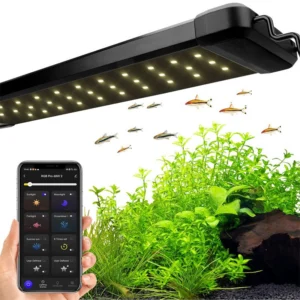
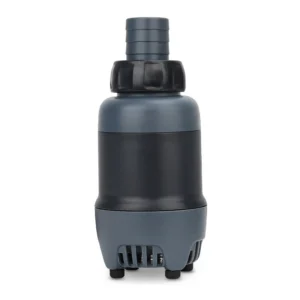
Leave a comment